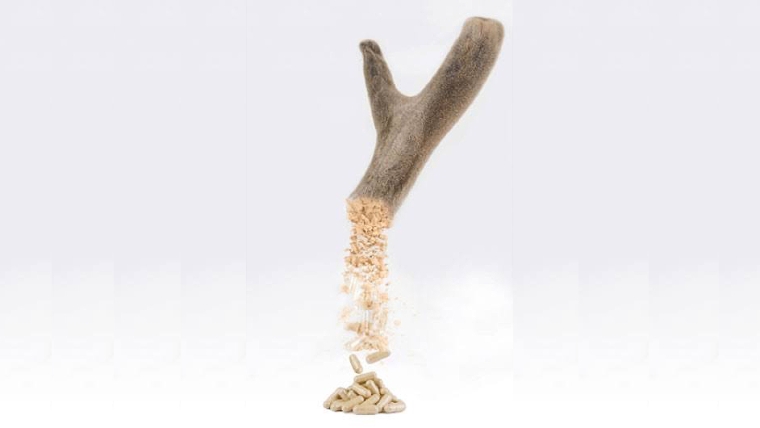
New Zealand deer farmers and indeed farmers in general will know that deer velvet has been used for over 2,000 years for its health benefit properties.
The velvet or the soft living antler of male deer has been celebrated in Asia for these significant health promoting properties. The first documented evidence of the use of velvet antler as a health tonic was found on a silk scroll recovered from a Han Tomb in Hunan Province in China. The scroll has been precisely dated at 168BC and contains a range of significant medical treatments and prescriptions using velvet antler.
Fast forward the clock, traditional and on-going Asian usage has focused on the promotion of well-being, which is increasingly being delivered via food-type products that include deer velvet and other functional ingredients.
In this week's episode of Factum-Agri I caught up with AgResearch scientist Dr Stephen Haines to discuss the science behind deer velvet.
Haines points out that in Western cultures, interest in velvet antler as a dietary supplement has grown in recent years. The major shift that has happened over the past decade, though, is the steadily increasing proportion of deer velvet that in consumed in Asian countries as an ingredient in convenient, ready-to-consume, off-the-shelf products.
This type of product, in which velvet may be regarded as a functional food rather than a pharmaceutical, has emerged to meet the needs of younger Asian consumers who typically do not wish to rely on traditional medicine to maintain good health. These younger consumers are less prepared to rely on traditional knowledge to support their choice of health-related products than previous generations, and they expect that products will be supported by strong scientific evidence of safety as well as potential health benefits.
The sections below review the scientific research that has been carried out to support its potential health benefits. The information has been selected based on completeness of the data, its apparent reliability, and the ease with which it can be compared to other studies. Whenever possible, reviewed data are from reputable scientific peer-reviewed journals, although some unpublished results are included. The general health benefits that have been identified are:
- Support for growth
- Supporting immune function
- Healthy joint function
- Bone health
- Aiding recovery after tissue injury
- Blood health
- Support for blood pressure and cardiovascular health
- Maintaining a normal cholesterol balance
- Athletic performance
- Support for memory function
- Anti-ageing effects
One of the interesting findings in Haines' research is immune function. Velvet antler is often used as a tonic by Asians at the beginning of and during winter. In Traditional Oriental Medicine, velvet antler is frequently prescribed as a tonic in situations of stress and fatigue. The Traditional Chinese Medicine Materia Medica indicates that velvet antler administration supports healthy levels of red and white cells.
Recent research has some apparently immuno-supportive effects demonstrated in laboratory animals and in vitro, but clinical trials have not yet been conducted to prove the benefits for humans. It is likely that velvet antler supports the immune system through effects on its white blood cells, particularly T and B cells, and macrophages. A variety of molecules in velvet (lipids, polypeptides, proteoglycans) that span a broad molecular weight range have been identified as having immunomodulatory activity in vitro and in laboratory animals, and multiple mechanisms are probably involved. The precise nature of these, and their interplay, has not yet been established.
Listen to the podcast to get the full story and full perspectives.
AP Stag
Select chart tabs
Angus Kebbell is the Producer at Tailwind Media. You can contact him here.
3 Comments
Do we really need to put animals through such stress? Are the so called benefits any better than a lab produced product?
What’s next, research supporting rhino penis?
Hey Rastus. Is that your perception of stress? Or do you have data supporting that claim?
Velvet harvest is done under anaesthesia in a low light environment where the animals are remarkably docile. The notion of mobs of stags in hard antler would be a major animal welfare issue - a nightmare situation.
Or do you just want to abolish deer farming?
Sorry, but this article reads like pure snake oil!
There is no data or evidence for the claimed health benefits. We have a PhD in synthetic organic chemistry talking about some oberservations made in some lab studies.
He's not a human doctor, biochemist or endocrinologist and there are NO studies on humans proving those claims whatsoever.
The link to traditional asian medicine is supposed to boost it's credibility but it does beg the question what's next rhino penises? Shark fin soup?

We welcome your comments below. If you are not already registered, please register to comment
Remember we welcome robust, respectful and insightful debate. We don't welcome abusive or defamatory comments and will de-register those repeatedly making such comments. Our current comment policy is here.